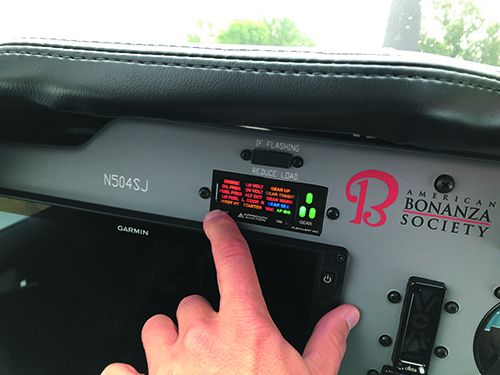With insurance premiums skyrocketing—especially for pilots of complex, retractable-gear airplanes—the last thing you need is a gear-up landing because you were distracted. Aftermarket audio and visual alert systems can help, while some can even monitor the status of cabin and baggage doors and other systems.
While there are retrofit systems that focus entirely on monitoring the state of the landing gear, there are some other systems to include audio panels and even flight displays that have customized alerting capability. In this article we’ll scan the market for some top picks that won’t break the bank, and help you avoid breaking the airplane by landing with the wheels in the wrong position.
FLEXALERT
The Approach Systems FlexAlert multifunction annunciator consolidates gear status, as we’ll as many other critical alerts, in one display. Measuring 3.0 inches wide, 1.3 inches high and 1.5 inches deep, the sunlight-readable and solid state LED FlexAlert panel is reasonably easy to retrofit in a variety of instrument panels, and the optimum location should be within the pilot’s primary scan. Mounting is pretty straightforward. There are eight mounting holes built into the chassis: two on the top, two on the bottom and two on each side. Mounting brackets are included with the kit, allowing the installer to select either a side mounting or a top/bottom mounting scheme. It is designed to be flush mounted on the panel.
The unit can be installed in certified and uncertified aircraft, and it’s FAA approved for installation as a minor modification (only a logbook entry is required) through the FAA’s Non Required Safety Enhancing Equipment (NORSEE) approval process. To review, NORSEE was designed to expedite the approval of new technologies that do not impact existing aircraft systems, but rather enhance them. Essentially, NORSEE approval is based on the premise that the device offers safety benefits that outweigh the potential risks of installing and operating the device. In theory, the failure of the device in the air or on the ground should not result in a reduction in safety.
The FlexAlert isn’t intended (based on the approval) to replace existing OEM annunciators, but instead as a supplement. In other words, you can’t remove existing type-certified annunciators and warning systems and replace them with the FlexAlert unless additional FAA approval is awarded, generally via field approval.
The FlexAlert is configurable for both retractable (including amphibs) and fixed-gear aircraft, and supports both 14-volt and 28-volt aircraft. For fixed-gear aircraft, a small bezel is included with the kit, which hides the landing gear icons from view. In addition to landing gear status, the unit displays warnings for oil pressure, fuel pressure, low fuel quantity, pitot heat, low voltage, over-voltage, alternator failure, cabin door status, starter engagement, vacuum failure and autopilot glideslope capture. The sensors for each function aren’t supplied with the unit. It simply ties in with the existing ones.
There are three individual door warning annunciations (displayed in red as L/DOOR/R). Depending on the configuration of the aircraft, the installer can interface with the existing door warning light(s), configuring the unit for display of a general door warning (“Door”), or even a warning for the left door or right/rear door warning if equipped. The installer selects which of the individual door annunciations to wire into, individually or in parallel, to match the existing door warning lights in the aircraft. With it you should never take off with an open cabin or baggage door again.
As for setup and configuration, three dip switch banks are located on the rear of the FlexAlert under a removable panel. At the time of installation, the dips are set (on or off) based upon which pre-existing annunciators have been installed in the aircraft. For fixed-gear aircraft, the landing gear dips are set to Off. As a result, when the Test button is pressed, the landing gear indicators will not illuminate, nor will the gear status alerts for Gear Up, Gear in Transit, Gear Warning and Seaplane Water Landing.
The FlexAlert is designed to replicate the existing, primary gear lights for retractable-gear aircraft and will work with a wide range of retractable landing gear annunciation configurations in certified aircraft. There are three individual gear-down annunciations (displayed in green) identifying the nosegear, left main gear and right main gear. Each of the three landing gear lights is controlled through independent inputs to the FlexAlert. Depending on the configuration of the aircraft, the installer can tie into the existing light(s), configuring the unit for display of each individual “gear down and locked,” or all three annunciations can be wired in parallel to match the annunciators in the aircraft with a single annunciator for showing that the gear is down and locked. Better yet, the FlexAlert can be configured for a variety of landing gear annunciations including aircraft with one gear light, tricycle landing gear with nosegear, left main gear and right main gear lights, tricycle landing gear with only a retractable nosegear light, or only retractable left and right main gear warning lights. It can also work in aircraft with landing gear warning audio alerts triggered by airspeed, altitude, throttle position and/or flap position. There’s also compatibility in aircraft with indications for gear in transit, gear up (stowed) as a normal or abnormal condition, aircraft with indications of gear up (stowed) as a warning condition, plus seaplanes requiring a blue indication of gear up for water operations.
At $595 and made in the U.S., we think the FlexAlert is a good value and worth considering when the plane is open for other upgrades. Visit www.flexalertaero.com.
P2 AVIATION 6601 AAS
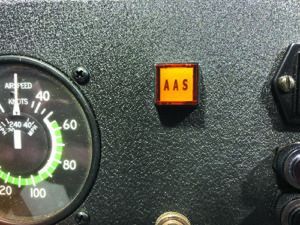
After selling his company Lake & Air to Wipaire, P2 Aviation technology founder Steve Petrich continued where the Amphibious Gear Advisory System (AGAS) model 9600 left off. Following his work in the early 1990s researching landing gear accidents and working closely with the NTSB on it, Petrich ultimately developed the 6600 Audio Advisory System, focusing on the retractable- gear general aviation aircraft. In addition to monitoring landing gear, it sported several new features aimed at high-performance retractable singles and light twins. The 6600 eventually evolved into the 6601 Audio Advisory System.
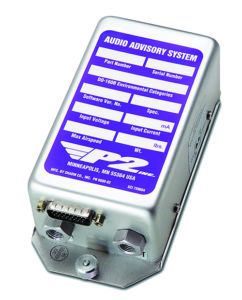
This new version was developed for both pressurized and non-pressurized aircraft. The PMA’d 6601 is currently STC’d with Approved Model List (AML) blanketing 230 models—from small piston retracs to small and midsized turboprops—including the King Air C90.
The 6601 AAS is a remote unit with alerting for landing gear, overspeed and stall conditions with both audible (via the aircraft audio system) and visual cues on some displays. Once airborne, the AAS continuously monitors the airspeed and compares it to the position of the landing gear. Once the aircraft slows down to the preset airspeed threshold, the system will alert the pilot with an audio queue, “Gear Is Down For Landing” (in a male voice) or “Check Gear, Check Gear” (in a female voice) if it’s not down. An optional Hobbs meter can be integrated into the 6601 and will be activated when the aircraft’s airspeed exceeds 35 knots. The idea with this approach is engine-time management, providing an accurate time for life-limited components, as we’ll as engine overhaul times.
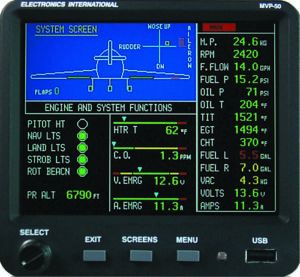
With an abnormal gear configuration, the annunciation repeats itself until the pilot cancels it by pressing the illuminated AAS annunciator light. The actual value is set at 10 to 15 knots (or MPH) above the final approach speed published in the POH. It can be adjusted up or down in 5-knot increments. The landing configuration airspeed threshold is set during installation and can be adjusted at any time.
The AAS powers on and off with the aircraft master switch, and simply functions by sensing the signal sent to the existing landing gear indicator lights and stall warning horn and by sensing the airspeed from the aircraft’s pitot-static system. It communicates with the pilot visually through the AAS push-button panel annunciator.
The computer continuously monitors the airspeed, the landing gear position and the stall warning system, and if the airspeed has exceeded the preset landing gear threshold value, the airspeed-dependent advisories become armed. For normal landings, the male voice is the only annunciation that you will hear (“Gear Is Down For Landing”) along with one flash of the annunciator. All abnormals will have a female voice (“Check Gear” and “Overspeed,” for example), as we’ll as continuous flashing of the AAS annunciator.
The pilot has the ability to silence the landing gear message at any time by simply pressing the AAS annunciator light. All other messages cannot be canceled.
If the aircraft speed exceeds the threshold, such as in a go-around or missed approach, the advisories are automatically canceled. The re-arming speed is set to 5 knots/MPH above the alerting speed to avoid bouncing in and out of alerts while flying close to the threshold in gusty winds. Ideally, the AAS should be integrated into the aircraft’s audio panel and not rely on the aircraft’s overhead speaker.
The 6601 AAS is $2195, and the optional Eaton 582 panel annunciator is $425. A basic panel annunciator/switch comes standard in the kit, along with a mounting tray, serial connector and other install hardware.
We’re told the next-generation warning system is in the works, which will be lighter and equipped with more features. Visit www.P2inc.com.
WIPARE LASER GEAR ADVISORY SYSTEM
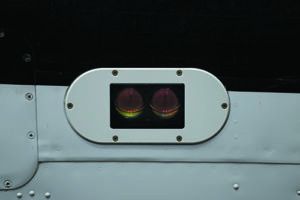
For over 60 years, Wipaire has been engineering and manufacturing a full line of respected water floats for a wide variety of aircraft. It replaced the familiar model 9600 gear advisory system designed by Steve Petrich with the Laser Gear Advisory system, which is designed for amphibious float ops (although a failed 9600 can be replaced by the new Laser system fairly easily).
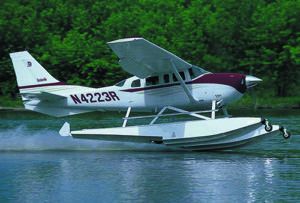
As you guessed, the system is indeed laser-based, and the system’s laser fixture is installed on most applicable aircraft in the underside of the wing, near the leading edge and facing down. The sensor is small enough that it tucks inside the leading edge with just the addition of the panel, which resembles a typical inspection panel. Others use a rectangular panel. The laser is hard-wired to the main controller, weighs 3 pounds and draws less than 2 amps of current.
The older 9600 system generates “Gear is Up for Water Landing” and “Gear is Down for Runway Landing” advisories, but the Laser system remains quiet when the landing gear and detected surface are in agreement. The laser becomes active at approximately 400 feet above ground level and compares the gear position with the detected landing surface. In the event of a mismatch, the system reminds the pilot to “Check Gear” at about 50 feet above the surface, allowing the pilot to initiate a go-around to address the gear position. In the event of a laser malfunction, the system controller will revert to the standard gear advisory voice annunciations. If the gear position is incorrect for the landing surface (or an asymmetrical gear position is detected) then an alert will sound. An audio alert of “Check Gear” will be repeated, indicating that a go-around should be initiated and the gear position checked and adjusted. This alert may also be triggered if a water surface is very shallow, has large or dense debris or is extremely choppy. These may all be good reasons to reconsider your landing location.
Wipaire’s STC and AML include the following aircraft: Air Tractor AT-802 Fire Boss, American Champion 8GCBC Scout, Aviat Husky, Cessna 172 Skyhawk, 180, 182 Skylane, 185 Skywagon, 206 Stationair, 208 Caravan, 208B Grand Caravan, CubCrafters CC-18 Top Cub, de Havilland DHC-2 Beaver, Piper PA-18 Super Cub, and in the works is the Maule M5/M6/M7.
The Laser Gear Advisory has been included as standard with all new Wipaire amphibious float sales since 2017, and can be purchased separately as a field-installed retrofit kit. The system retrofit conversion kit for preexisting Wipaire floats is $6,400. The company said the Landing Gear Advisory system cannot be installed into Wipaire’s competitor’s floats due to the variability in how different float models are wired. Visit www.wipaire.com.
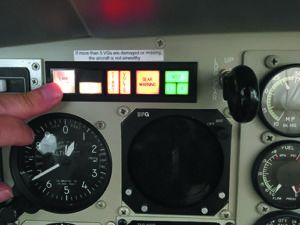
With a little bit of creative wiring and the right hardware, you don’t always need laser sensors or multifunction warning panels for an added layer of gear warning backstop. Lots of older retracs have landing gear status lights placed in pretty inconvenient places—sometimes in a center pedestal or down low in a subpanel. Add to that an inoperative or failing gear warning horn and it’s no wonder some pilots belly it in.
Airplane in for an avionics upgrade? You can have the shop supplement the OEM landing gear lights with a second set of annunciators better placed within your instrument scan. One option is to simply use an Eaton or Staco lighted annunciator that’s custom-modified to display whatever warning text suits you. Maybe Gear Unsafe or Check Gear. If the instrument panel is opened up for other work, it might not cost as much as you think. Other than making a cutout for the annunciator, the effort will be running power and ground wiring to it, and tapping in to the existing gear warning system to double-up on the outputs. Some shops might install an airspeed switch to trigger a gear alert, and others might run wiring from the gear warning circuit. Talk to your installer about what can work the best for your given system. If you’ve been putting off an audio panel upgrade, now may be the time to pull the trigger.

One system worth considering is PS Engineering’s PMA450B. It (and the PM8000G) have a feature called Flightmate, where you can custom program your own audible voice alerts (there are up to four discrete inputs) which can be triggered from the existing gear warning system. It’s as easy as running a power wire (the audio panel accepts the warning signal in as a voltage) from the existing gear horn/sonalert into the panel. The PMA450B has a built-in display, but Fightmate only uses audible alerts. Garmin’s later GMA-series panels also accommodate discrete inputs for gear warning input.
None of these systems and accessories can legally replace the OEM gear warning system, of course, but with the right planning you can build your own supplemental gear warning system that might be better than the OEM’s. —Larry Anglisano
CONCLUSION
Frankly we’re surprised there aren’t as many aftermarket landing gear alerters as there once were. Of course, some larger aftermarket engine monitoring systems accommodate gear and flap signal inputs, and as we discuss in the sidebar above, modern audio panels can offer their own utility. Large-screen EFIS platforms like the Dynon SkyView HDX Certified and Garmin G3X Touch accommodate gear and flap signal inputs, too.
Aircraft Spruce (www.aircraft-spruce.com) sells the Aero Safety System AH500SD central warning panel for $1145. It combines engine, aircraft configuration (gear and flaps) and even flight data in one 6.25 by 1.72 inch display panel. Unfortunately it’s not approved for certified aircraft, although the company is working toward an STC. We’ll keep tabs on it.
Aviation Consumer Contributor Phil Lightstone owns and flies a Rockwell Commander, and produces the Plane Talk podcast, available on Apple, Google and at www.planetalk.ca.

